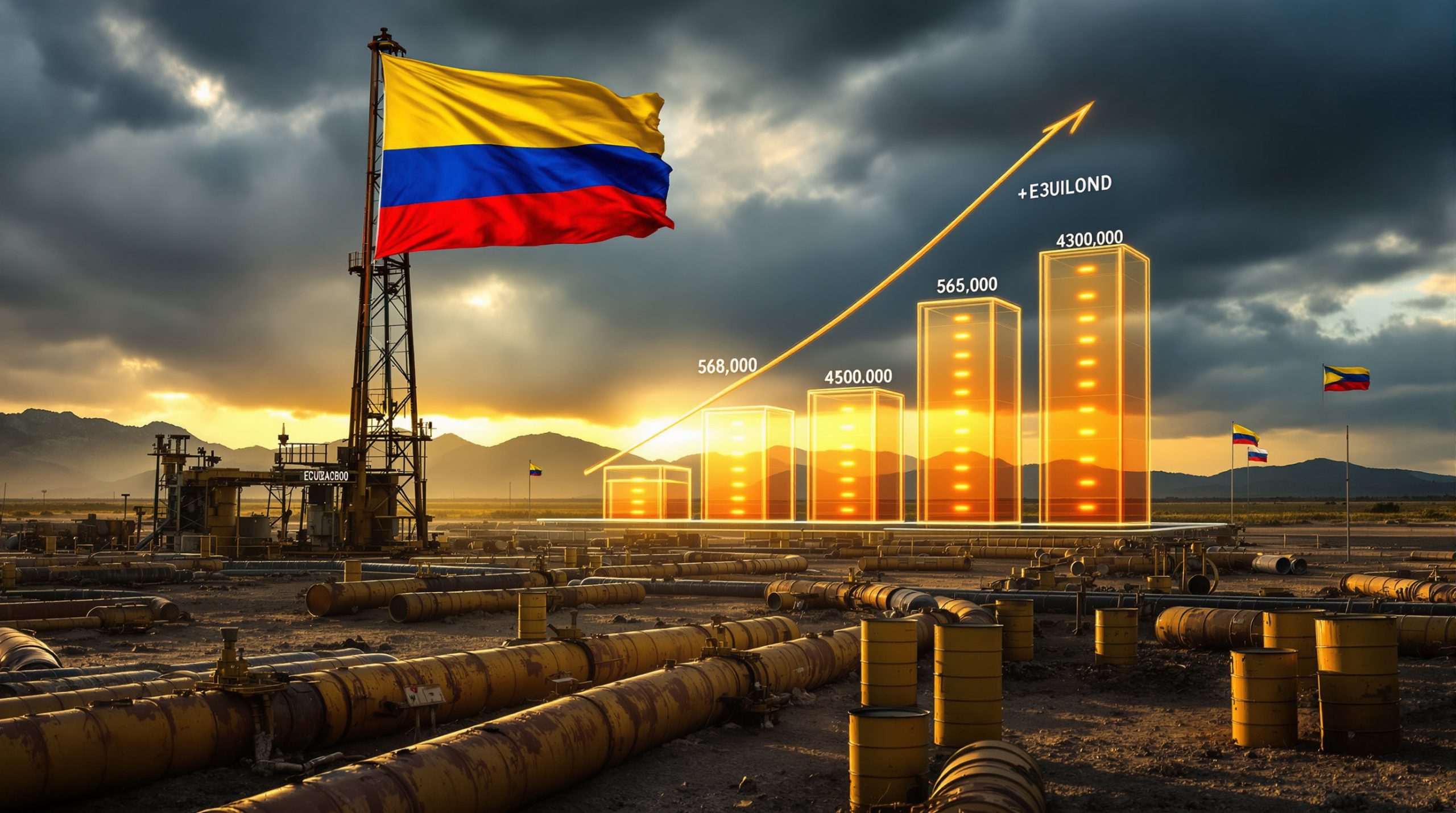How Trade Policy Shifts Drive Global Commodity Market Dynamics
The dramatic reversal in US trade rhetoric toward China sent shockwaves through global commodity markets, demonstrating the intricate relationship between diplomatic tensions and industrial metal pricing. When Trump eases trade tensions with China became the narrative shift in October 2025, markets experienced immediate relief after initial volatility across both commodities and equities. However, this evolution from confrontational threats to conciliatory language highlighted how sensitive global supply chains have become to bilateral tensions between the world's two largest economies.
This rapid transformation from trade confrontation to negotiation readiness particularly resonated with markets given China's dominance in processing over 85% of global rare earth oxides according to U.S. Geological Survey data. Furthermore, our comprehensive tariffs impact analysis reveals how these policy shifts create cascading effects throughout global commodity markets.
Copper Recovery Reflects Broader Economic Sentiment Shifts
Industrial metals experienced varied responses to the changing trade rhetoric, with copper leading the recovery trajectory. After declining 2% initially on trade concerns, copper prices stabilised at $10,571.50 per ton, positioning for a 0.5% weekly gain despite daily volatility. This recovery occurred against the backdrop of copper price insights showing the metal had reached $11,000 per ton the previous week, marking its highest intraday level since May 2024.
The price movement patterns revealed copper's role as a barometer for global economic expectations. Research from the International Copper Study Group shows that approximately 28% of refined copper consumption globally supports building construction, while 25% goes to electrical and electronic products. Consequently, this makes it highly sensitive to economic growth forecasts and trade policy uncertainty.
Base metals exhibited mixed performance during this period:
- Aluminium declined less than 1% while maintaining recovery momentum
- Nickel and zinc both posted declines under 1%
- Lead bucked the trend with a 0.7% gain
- Iron ore futures fell approximately 1% despite infrastructure optimism
The performance divergence among base metals reflected varying degrees of supply chain exposure to Trump eases trade tensions with China dynamics. Lead's positive performance against broader market weakness suggested specific supply-demand factors independent of trade tensions.
Critical Dependencies Shape Trade Negotiation Leverage
The strategic importance of industrial metals in trade negotiations stems from fundamental supply chain interdependencies between major economies. China's position as the source of 54% of global refined copper consumption creates significant leverage in trade discussions. Meanwhile, the United States' reliance on Chinese rare earth elements processing presents vulnerabilities in critical technology supply chains.
Manufacturing sector correlation data from World Bank research indicates that for every 1% increase in global manufacturing output, copper demand typically increases by 0.8-1.2%. This demonstrates the strong connection between industrial production and metal consumption, explaining why trade policy announcements create immediate price reactions in industrial metals markets.
The technology sector's exposure to these trade dynamics has intensified with the clean energy transition. International Energy Agency projections suggest demand for critical minerals including copper, lithium, cobalt, and rare earth elements would increase 4-6 times by 2040 under Paris Agreement scenarios. In addition, a typical electric vehicle requires 83 kg of copper compared to 23 kg in conventional vehicles, representing a 3.6x increase that amplifies trade policy impacts on automotive supply chains.
Supply Chain Vulnerability Assessment
The U.S. Geological Survey reported that the United States maintains 100% import dependence for at least 12 mineral commodities and over 50% import reliance for another 31 commodities critical to economic and national security. This dependency structure creates both opportunities and risks in trade negotiations:
- Rare earth elements: China produces 70% of global output and processes 85% of oxides
- Critical mineral processing: Concentrated in specific geographic regions
- Technology manufacturing: Dependent on stable bilateral trade relationships
- Infrastructure development: Requires consistent material supply pricing
However, recent developments including the Trump mining order suggest potential policy changes aimed at reducing these dependencies through domestic production initiatives.
Market Response Patterns Reveal Trading Dynamics
Commodity markets demonstrated their characteristic rapid response to trade policy developments. Research from the Journal of Futures Markets shows that liquid contracts like copper typically achieve 50% of their full price adjustment within 2-4 hours of major announcements. Complete price discovery occurs within 24-48 hours, though longer-term supply contract adjustments follow quarterly patterns based on quotational period structures.
Gold markets initially positioned for significant weekly gains before pulling back as Trump eases trade tensions with China became apparent. The precious metal had been tracking toward its largest weekly advance since September 2008, when financial crisis conditions drove an 8.7% surge during the Lehman Brothers collapse week. For instance, our gold price analysis shows how the pullback from records reflected reduced safe-haven demand as diplomatic rhetoric improved.
According to Yahoo Finance, "Trump says threatened China tariff levels are not sustainable," signalling a shift in the administration's approach to trade negotiations.
Currency considerations add another layer of complexity to commodity positioning. Research indicates that commodity price movements in USD terms can differ by 5-15% from local currency returns due to exchange rate fluctuations, particularly affecting non-US investors during periods of trade policy uncertainty.
Investment Strategy Considerations
The volatility patterns surrounding trade announcements create both opportunities and risks for market participants:
- Short-term trading: Leverage diplomatic announcement timing for tactical positions
- Geographic diversification: Reduce single-source supply chain exposure
- Critical minerals exposure: Position for long-term strategic importance regardless of trade outcomes
- Currency hedging: Manage foreign exchange risk in international commodity investments
Sustainable Policy Framework Questions
Trump's acknowledgment that current tariff levels are "not sustainable" according to Bloomberg reporting raises questions about long-term trade policy direction. The economic impact assessment shows that previous tariff implementations created costs for US consumers, with Peterson Institute research estimating $831 annual burden per household from 2018-2019 tariff structures.
The confirmed meeting with Xi Jinping in South Korea represents a significant diplomatic opportunity within the Asia-Pacific Economic Cooperation framework. APEC's 21 member economies represent 38% of global population and 62% of global GDP, providing a multilateral context for bilateral trade discussions. Furthermore, comprehensive analysis of US-China trade impact reveals the broader implications of these diplomatic developments.
Congressional oversight remains a factor in trade policy implementation. While presidential authority exists for tariff imposition under various statutes including Section 232 and Section 301, Congress retains constitutional authority over trade policy and can theoretically override presidential decisions through legislation, though such actions have been historically rare.
Broader Economic Implications Beyond Commodities
The commodity market relief occurred against a backdrop of broader financial sector concerns. Regional banking stress related to commercial mortgage fraud cases highlighted credit quality issues that could affect commodity financing availability. Commercial real estate loans total approximately $2.9 trillion on US bank books, representing 20% of total bank lending according to Federal Reserve data.
Manufacturing cost structures stand to benefit from reduced tariff uncertainty. Bureau of Labor Statistics data shows imported inputs account for 13.3% of manufacturing production costs on average, with electronics and transportation equipment showing higher import intensity. Consequently, stable trade relationships could reduce input cost volatility and improve production planning.
Supply chain optimisation research from MIT's Center for Transportation & Logistics suggests companies can achieve 15-25% cost reductions through regional diversification strategies. However, implementation typically requires 2-3 years of investment and process restructuring. Trade policy stability facilitates these longer-term supply chain investments.
Regional Trade Agreement Influences
The bilateral US-China trade relationship operates within a broader network of regional trade agreements and multilateral frameworks. The evolution from confrontational to cooperative rhetoric could influence:
- Supply chain resilience investments across multiple jurisdictions
- Technology transfer agreements for critical mineral processing
- Infrastructure development cooperation in third countries
- Clean energy transition mineral supply security arrangements
According to SwissInfo, market sentiment improved significantly as "stock slide eases on Trump's remarks as banks rise," reflecting broader confidence in diplomatic progress.
Long-term Market Positioning Strategies
The rapid shift from trade tensions to diplomatic engagement creates several investment themes for market participants to consider. Critical mineral security strategies remain important regardless of trade outcomes, given the fundamental supply-demand dynamics driving clean energy transitions.
Portfolio diversification across geographic supply sources helps manage political risk while maintaining exposure to growing industrial demand. S&P Global Market Intelligence data shows the top 10 copper-producing countries account for 75% of global mine production. Chile, Peru, China, and Democratic Republic of Congo lead production, suggesting diversification opportunities across multiple jurisdictions.
Investment Theme Analysis: The shift from trade confrontation to diplomatic engagement has created immediate relief in industrial commodity markets, with copper leading the recovery despite broader economic concerns. Critical minerals retain strategic importance regardless of trade outcomes, while supply chain diversification themes gain prominence for risk management.
Technology sector adaptation to evolving trade frameworks presents both challenges and opportunities. The Department of Energy's $2.8 billion allocation through the Bipartisan Infrastructure Law for battery material processing indicates government support for domestic critical mineral supply chain development, creating potential investment opportunities in processing and manufacturing facilities.
Risk Management in Uncertain Trade Environment
Commodity market volatility during trade policy announcements exhibits clustering patterns. GARCH modelling research shows copper price volatility increases by 15-20% during uncertainty periods. This pattern suggests risk management strategies should account for elevated volatility during diplomatic negotiation phases.
Currency hedging becomes particularly important for international commodity exposure during trade policy transitions. The London Metal Exchange offers currency futures and options alongside metals contracts, providing tools for managing foreign exchange risk that can significantly impact returns for non-US investors.
Long-term supply contract structures provide some insulation from spot price volatility. For instance, copper concentrate supply contracts typically use 30-90 day quotational periods, meaning delivered prices adjust over quarterly timeframes while spot prices react immediately to news events.
The evolution from trade confrontation to diplomatic engagement demonstrates how quickly commodity market sentiment can shift based on policy rhetoric. When Trump eases trade tensions with China, markets respond with measurable relief across multiple asset classes. For market participants, maintaining flexibility in positioning while focusing on fundamental supply-demand drivers provides the best framework for navigating ongoing trade policy uncertainty. Critical minerals retain their strategic importance regardless of bilateral trade outcomes, while diversification strategies help manage political and geographic concentration risks in an increasingly complex global supply chain environment.
Interested in Identifying the Next ASX Mining Discovery?
Discovery Alert's proprietary Discovery IQ model scans ASX announcements instantly, identifying high-potential mineral discoveries before they move the broader market. Experience firsthand why historic discoveries have generated exceptional returns and begin your 30-day free trial today to secure your market-leading advantage.




